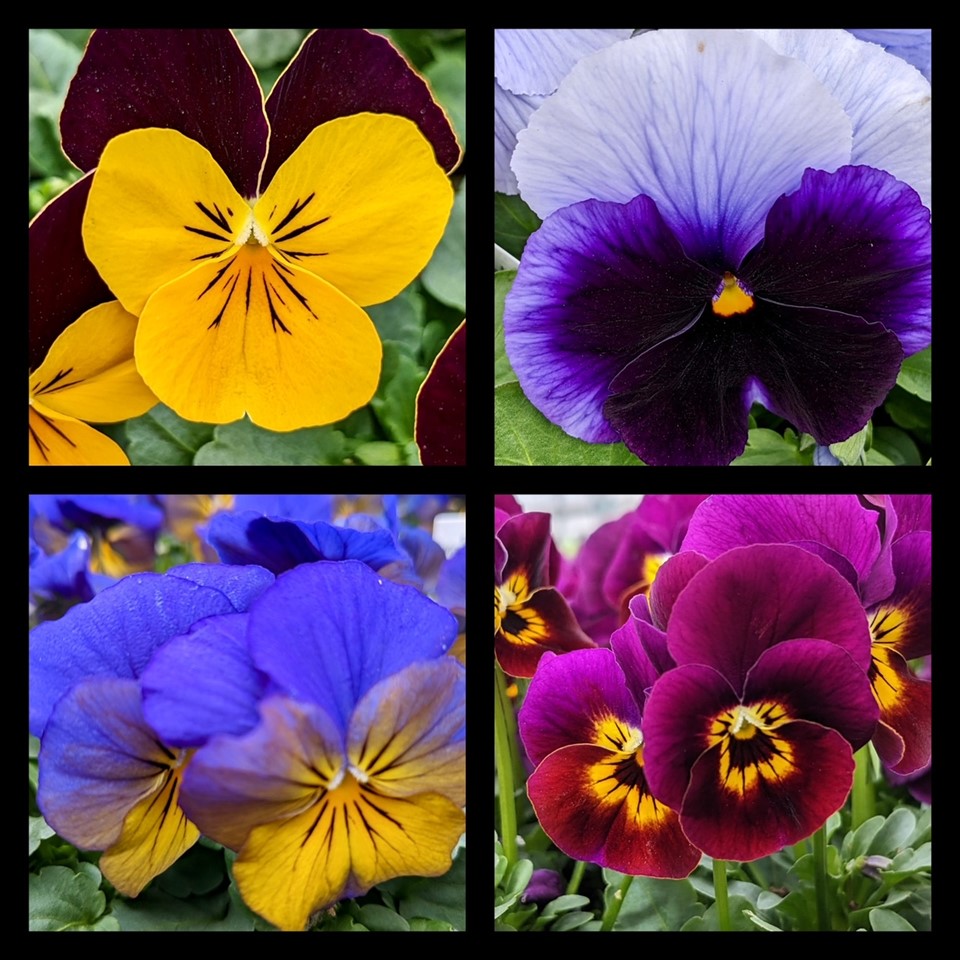Pansies

In Massachusetts there is one annual that firmly marks the arrival of spring and fall, and that is the pansy. While some might feel they are over-used, it is for good reason: in the cooler temperatures of these two seasons they will bloom their hearts out, providing cheerful color until either summer gives us a taste of the tropics or winter the arctic. Having said that, they are surprisingly tough and I had several hang on through 2022’s heat as well as its generally mild winter.
The pansies and related violas we know today have their origins in small flowers that have been cultivated in Europe since ancient times. The name pansy is a corruption of the French word “pensée” meaning “thought” and the flowers have signified remembrance since before Shakespeare.
These early gardeners would grow several varieties of wild pansy: viola arvensis and viola tricolor both European field pansies, and viola bicolor, American field pansy, all of which have the common names of Johnny Jump-ups and Hearts-ease. By the early 19th century gardeners were experimenting with hybridization of these plants. Lady Mary Elizabeth Bennet, aided by her gardener, William Richardson, developed pansy hybrids which she introduced to the public in 1813. While her introductions appear to be the earliest pansy cultivars recorded, the large flowered pansy we are so familiar with today is credited to Lord Gambier and his gardener, William Thompson, who created our modern day pansies in the form of Viola x Wittrockiana. This new hybrid gave us the familiar ‘face’ that many strains of pansies now have, and since then growers have continued to create new strains and styles. Pansies now come in colors ranging from white to near black, yellow, orange, pink, red, blue and purple. They can be single or multiple colors and with or without a ‘face’, a dark colored center. These days some even have ruffled petals.
As a plant, pansies are small, short-lived perennials, although most people choose to grow them as annuals. They are also easy to grow from seed, hence their wild cousins’ name: Johnny Jump-ups. They can tolerate light frost, and some heat, providing they do not dry out. If the plants become untidy they can be sheared back and will soon rebound.
Similar to pansies are violas. They are smaller plants, but what they lack in size they make up for with the quantity of flowers. These come in shades of white, yellow, orange, blue, purple and burgundy. They can be distinguished from pansies by the arrangement of their petals. Pansies have four petals pointing up and one down, while violas have two pointing up and three down. Violas, along with some pansies, are scented, and on warmer days their subtle scent is unmistakable with the scent being strongest in yellow and blue flowers. Violas are a bit more cold tolerant, so can hold up better in New England, depending on what temperatures we get.
Pansy and viola flowers are actually edible and can be added to salads or sugar coated to decorate cakes and desserts. It should be noted that this quality is the only negative factor for New England gardeners whose yards are haunts of deer and rabbits. In early spring when fresh foodstuff is in short supply deer and rabbits can consume the flowers and even foliage. While this usually doesn’t kill the plants, repellent or hot pepper wax sprays are useful to ensure those cheerful faces continue to smile! When regular grazing is available, herbivores leave them alone.
To make the most of these versatile flowers, mix them with bulbs and winter heather in spring, while in fall they compliment mums and celosia as well as sedge grasses and heuchera. Give them some slow release fertilizer and adequate moisture and they will push out their colorful blooms for many weeks.
Sources:
https://plants.ces.ncsu.edu/plants/viola-arvensis/
https://plants.ces.ncsu.edu/plants/viola-bicolor/
https://inaturalist.ca/taxa/55739-Viola-tricolor
https://www.greenhousegrower.com/crops/pansies-and-violas-lots-of-great-breeding-2/
https://hgic.clemson.edu/factsheet/pansies-and-johnny-jump-ups
https://aggie-hort.tamu.edu/archives/parsons/flowers/pansies.html







